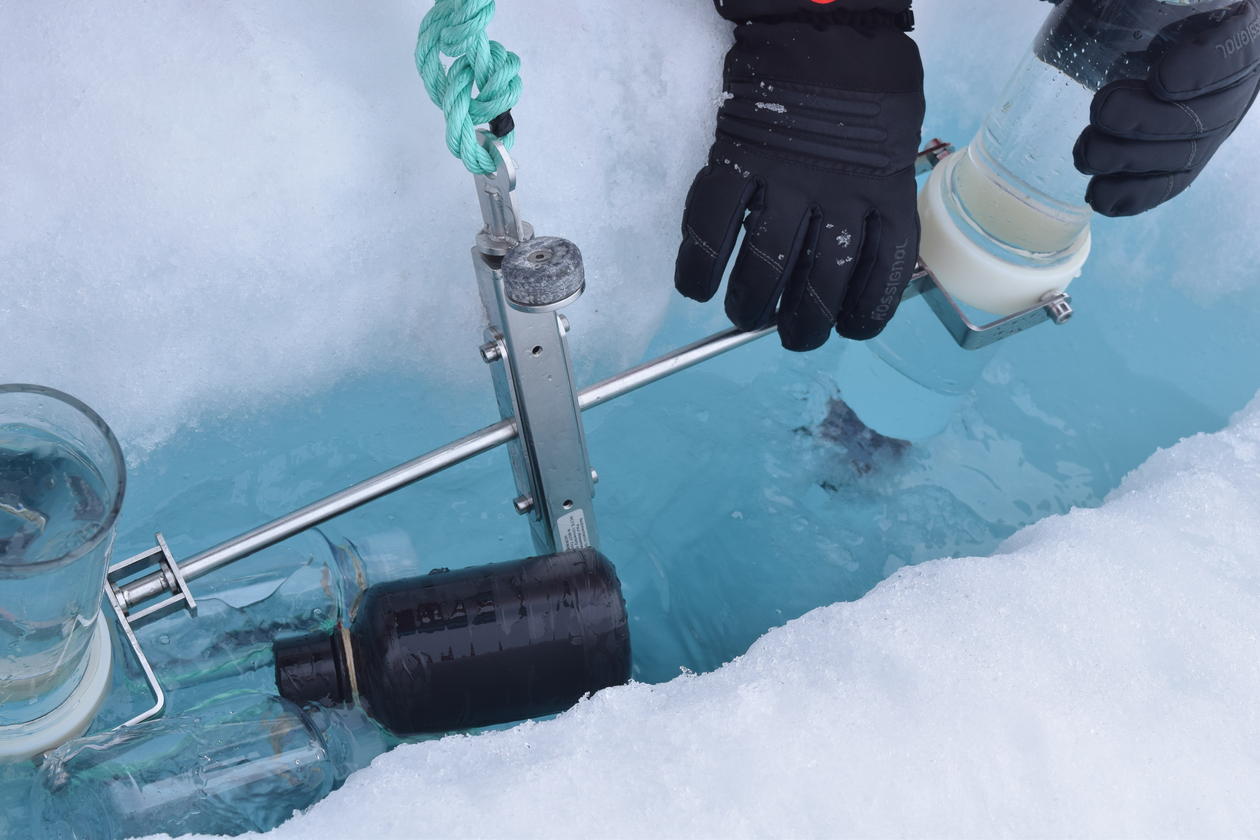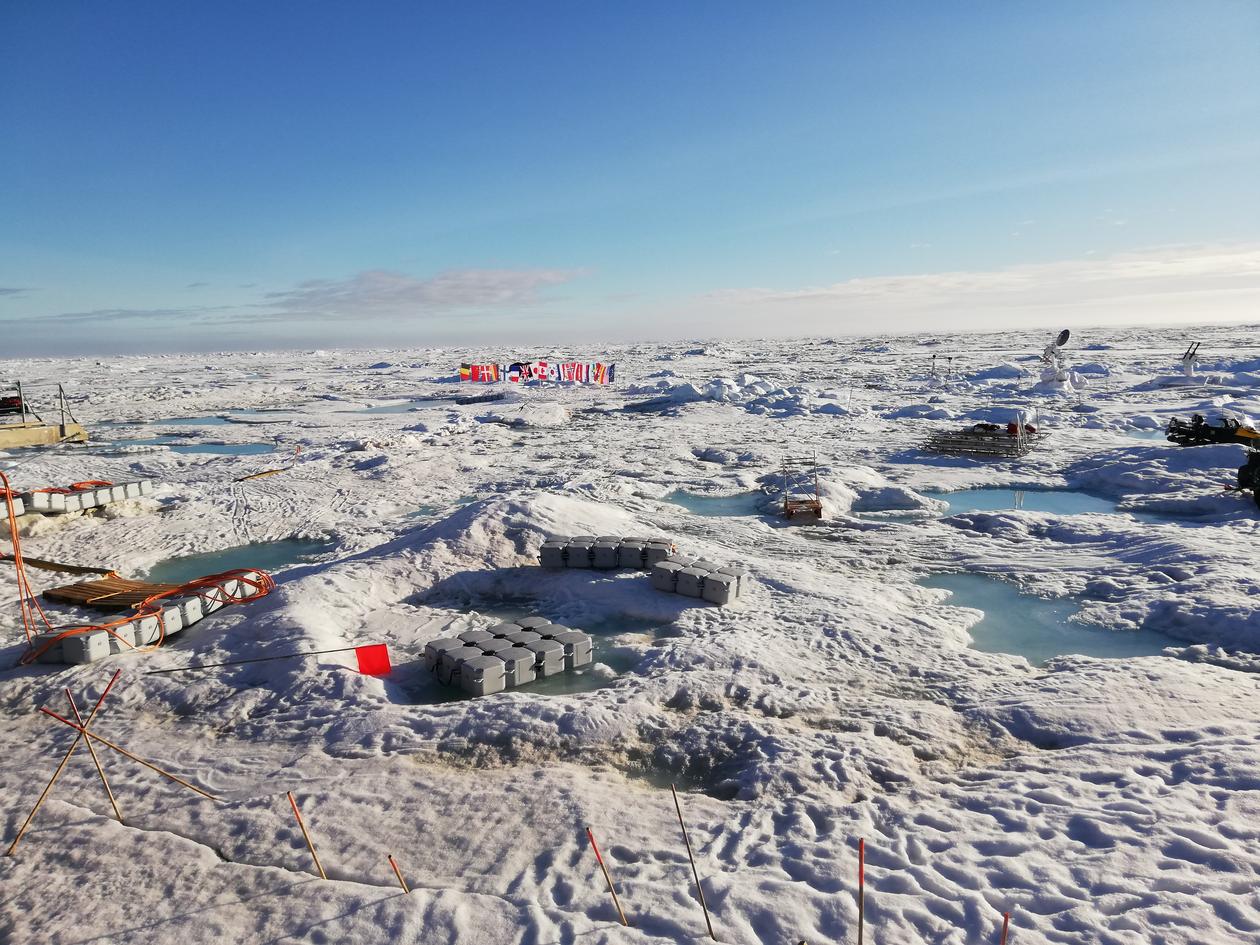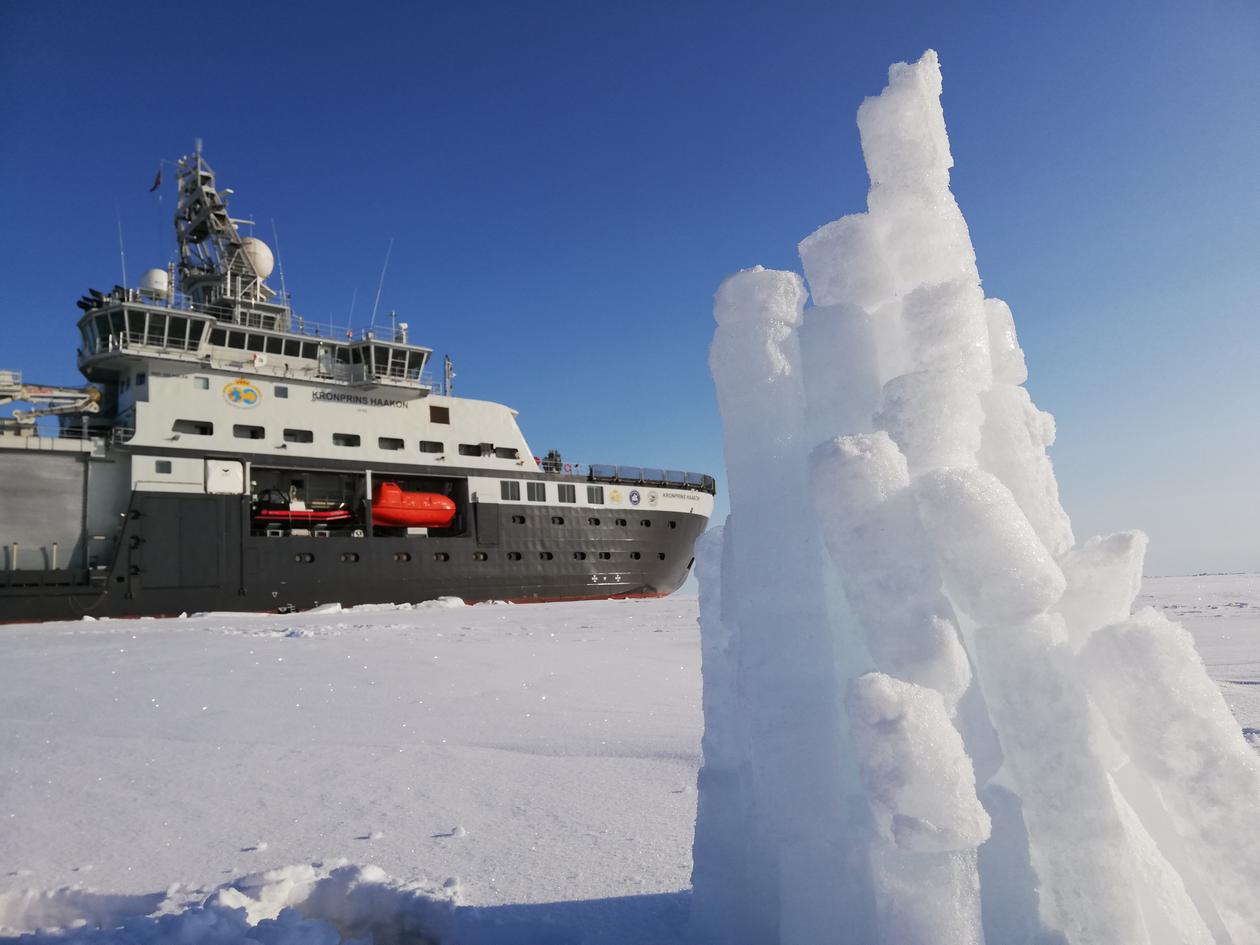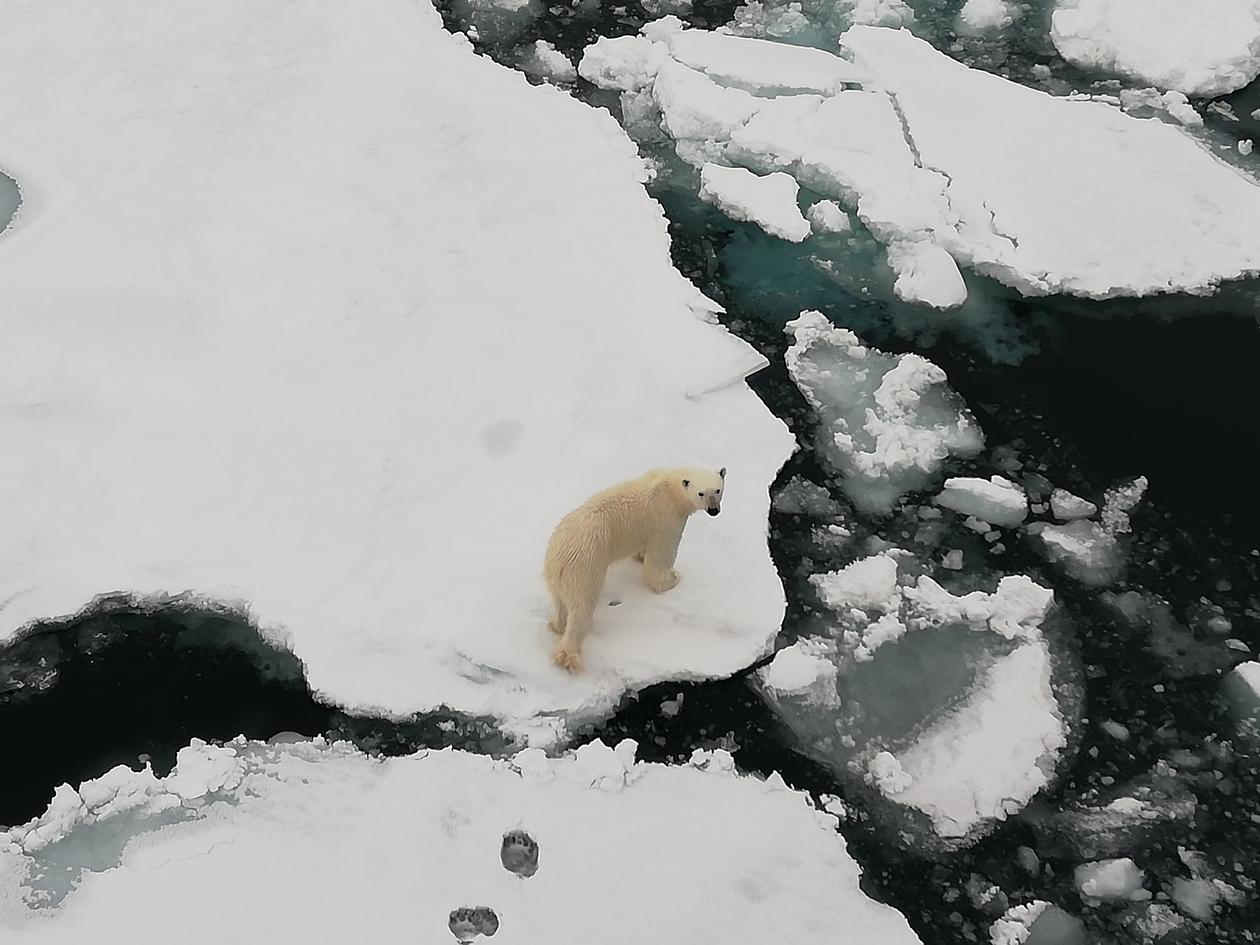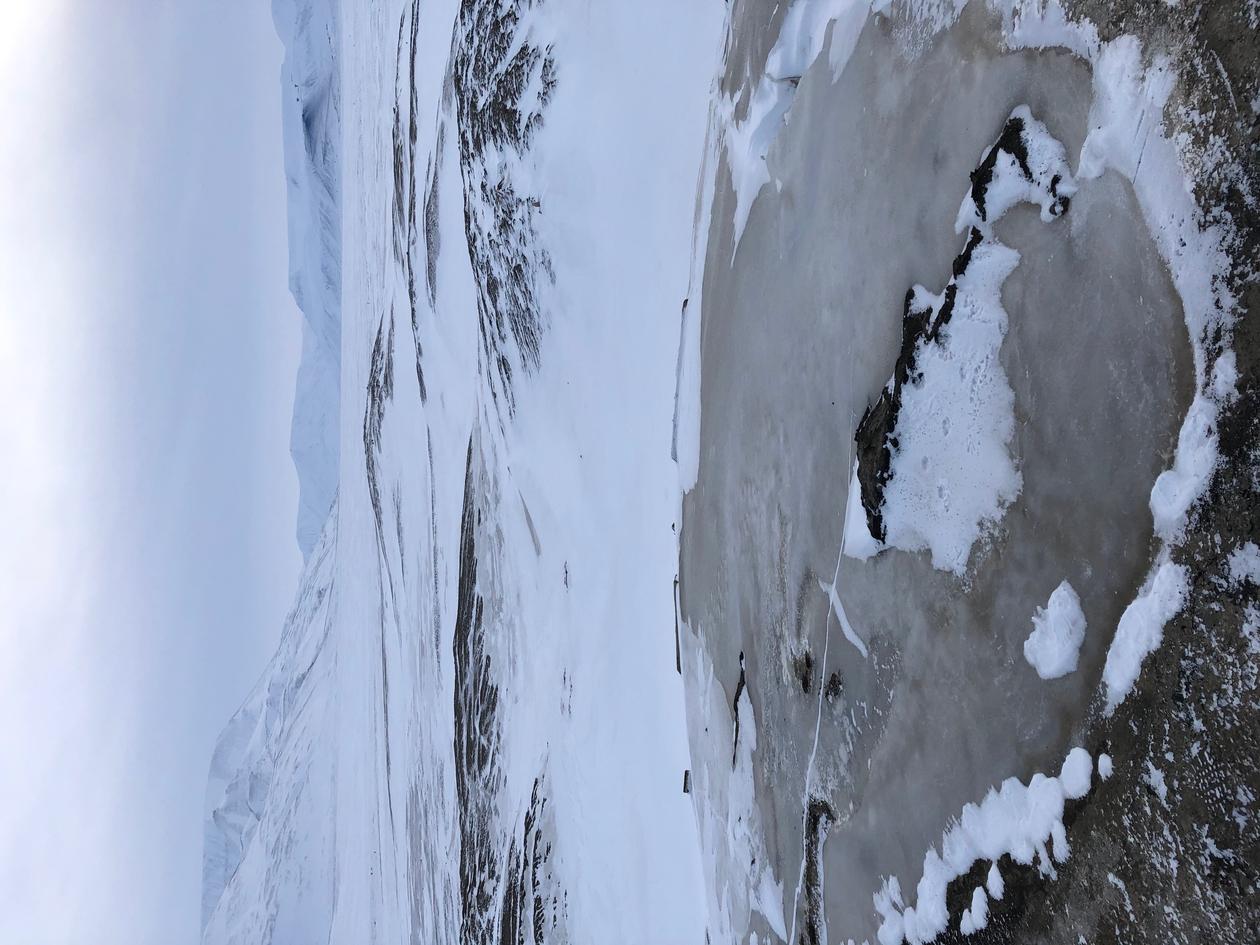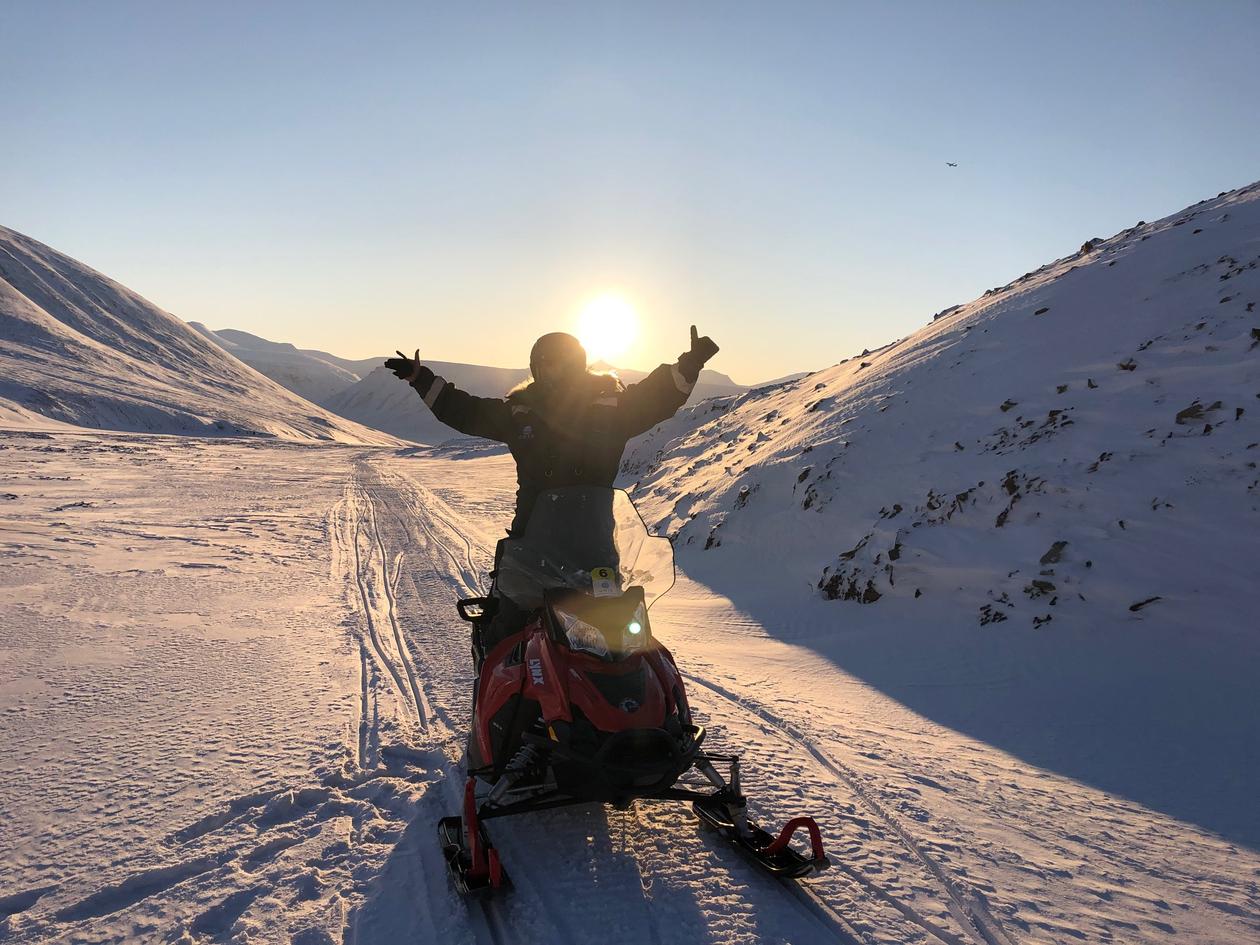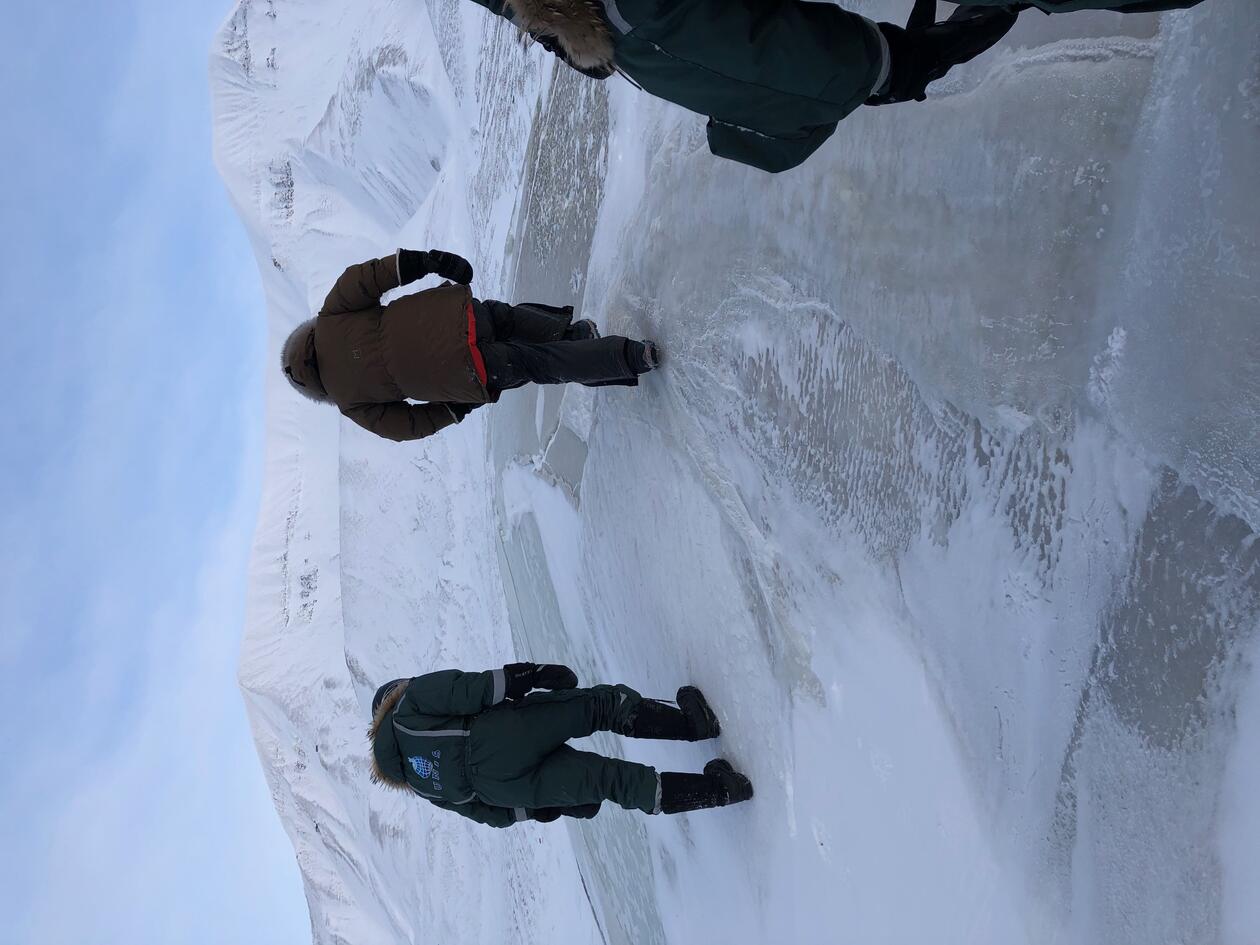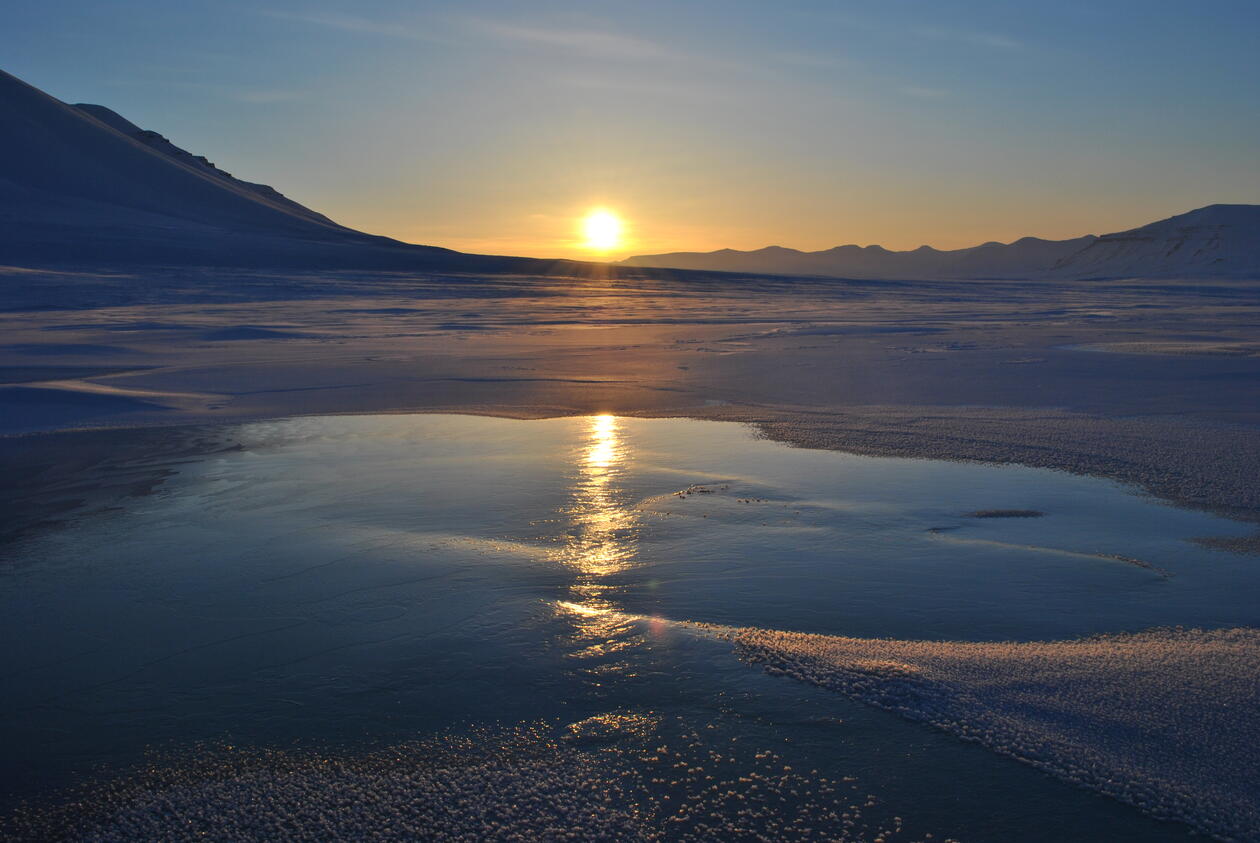Exciting Arctic field work going on
Several people from the Marine Microbiology group are currently involved in national and international field work campaigns in the Arctic. Working conditions can be hard in this cold environment, but researchers who got to participate in Arctic cruises or field work say it is a life-time experience! Read more about the Nansen Legacy and HAVOC (part of Mosaic) projects as well as CLIMAGAS below.

Main content
Nansen Legacy:https://arvenetternansen.com/
Duration: 2017 - 2023
The Nansen Legacy constitutes an integrated Arctic perspective on climate and ecosystem change, from physical processes to living resources, and from understanding the past to predicting the future.
The work package The living Barents Sea addresses the following tasks:
Characterize biological communities in sympagic, pelagic and benthic realms in the seasonal ice zone of the northern Barents Sea and adjacent slope of the Arctic Basin in terms of biodiversity, abundance, biomass and distribution patterns in relation to environmental forcing, in particular sea ice
Investigate the timing of critical biological processes including primary and secondary production, phenology of life cycles, and related processes and test how changing conditions may affect these seasonal patterns across several trophic levels
Characterize the total annual production from microbes to fish along latitudinal and environmental gradients, identify production hot spots and how condition-specific variability in life history traits affect these
Characterize lower trophic level food web structure and links to consumers including top predators, carbon cycling, and biological interactions, and investigate selected regulating factors
MOSAiC/HAVOC:
Duration HAVOC: 2018 - 2022
https://mosaic-expedition.org/
https://follow.mosaic-expedition.org/
https://www.npolar.no/prosjekter/havoc/
MOSAiC is the largest polar expedition in history: in September 2019, the German research icebreaker Polarstern has set sail from Tromsø, Norway, to spend a year drifting through the Arctic Ocean - trapped in ice. The goal of the MOSAiC expedition is to take the closest look ever at the Arctic as the epicenter of global warming and to gain fundamental insights that are key to better understand global climate change.HAVOC investigates the role of sea ice ridges in the thinner ice pack in the Arctic Ocean. While the ice is getting thinner, the thicker parts of the ice cover are most likely to survive summer melt and provide the last habitat for ice-associated flora and fauna.
Understand how sea-ice ridges shape their surrounding physical environment relative to level ice
Understand how and why ridges provide a habitat for ice-associate biota
Improve representation of ridges in sea-ice ecosystem models
Quantify how ridges contribute to the overall productivity of the ice-associated ecosystem
CLIMAGAS
The earth is warming, especially the polar regions. Therefore, ice and permafrost will melt and a variety of climate change related processes will be triggered. Permafrost is specifically vulnerable and a thawing of these soils may lead to an activation of tremendous amounts of carbon stored within. Microbiological processes, will thus lead to large emissions of carbon dioxide and methane, both climate active gases. Therefore, it is important to understand how thawing permafrosts, carbon availability and microbial communities correlate and what impacts a warming arctic may have on gas emissions.
CLIMAGAS aims to investigate the microbial communities in permafrost and open system pingos in Adventdalen, Svalbard, to better understand methane metabolisms in these environments. In permafrost soils and the underlying ground water, archaea produce methane under anaerobic conditions and both, archaea and bacteria, consume methane anaerobically or aerobically. In addition, methane clathrates (“methane ice”) trapped in the permafrost can melt and release methane. The methane often solves in the ground water and is transported to the surface, e.g. in open system pingos, where it is either consumed or escapes into the atmosphere. The understanding of the microbial processes involved in methane production and consumption and the consequences these processes have is sparse. Therefore, we investigate the microbial communities of these pingos and permafrost soils to understand the dynamics of methane related processes and enable predictions of future changes in a warming arctic.
